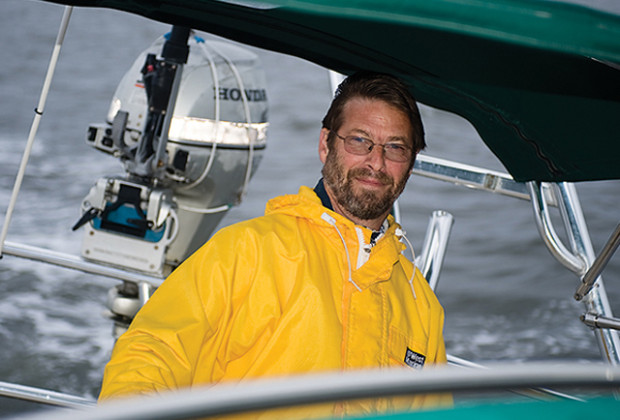
10 PHASES OF PASSAGEMAKING
This summer will mark 20 years since Rosie and I and our boys sailed back into Newport R.I. to complete a five year 36,000 mile circumnavigation. Along the way and many times before and since, I have undertaken long offshore passages, something I enjoy immensely. Here’s what I have come to think of as the 10 phases of a long offshore passage.
1. Preparation: In the final two weeks before setting off to sea, I get really focused on the weather forecasts and on checking the most important items off the to do list. As Capt. Ron says, “If it’s gonna happen, Kitty, it’s gonna happen out there.”
2. Departure: With a favorable weather forecast, the tanks and larder full, we say our goodbyes, call the relatives, and then have an early, party-free night before setting off at dawn with a clear head and eyes focused on the horizon.
3. First three days: Becoming accustomed to the motion of the boat at sea and to the broken sleep patterns of watchkeeping can be hard. It takes three days of napping, staying hydrated, fed and warm, to get into the new diurnal rhythms of the sea. And, then, on the third morning, you awake bright, rested and have your sea legs under you. It’s kind of a miracle.
4. The Routine: Life at sea is simple, healthy and very much determined by routine. Sailors lives are always ruled by the chime of the ship’s bell. The day starts with a radio check-in and weather downloads. Breakfast sees the crew all awake for a brief time, then it’s time for morning naps. Midday sees the crew busy with repairs and routine maintenance. It’s a rule that you have to fix three things every day or you’ll have more to fix tomorrow. Sunset sees the crew gather in the cockpit before dinner in vain hopes of seeing a green flash and then the night’s watches begin. For many sailors, night watches are their favorite because of the beauty of the sky and the magnificent solitude. And at the end of it, there is the magic of sunrise.
5. Mid-Passage: Halfway to the destination, it is time to party. Some don costumes and sing chanteys, some swim naked in the sea, some crack open a bottle of bubbly. Aboard our boat, we roast a leg of lamb, boil potatoes and beans and have a traditional Kiwi feast—since Rosie is a Kiwi after all.
6. Anticipation: Once you get past the mid-passage the call of the next landfall grows louder. This is when we dig out the cruising guides, the Lonely Planet Guides, the memoirs and other books we have collected and begin to really study up on where we want to sail, what we must see and do, and what to expect. It’s like studying for the start of a new life.
7. Navigating: Even though our navigation is all digital and driven by satellites that rarely make mistakes, the last few days of a passage are made busy by the urge or need to make a good, safe and timely landfall. Do we motor sail to speed up for a daytime arrival? Or slow down?
8. Landfall: The cry of “Land Ho” never get’s old and it is fun to award a prize to whomever first catches a glimpse of land after many days at sea. Even old salts have their eyes peeled.
9. Anchor down: After days of rolling and rocking, you sail into a protected bay where the water is flat and all seems so incredibly calm. You find a spot and then the sound of the chain running out and the feel of the hook grabbing the bottom tell all that the passage is complete, safe and without incident.
10. The tot: The reason man invented rum, I guess, must be for that short happy toast after the sails have been furled and the boat put to bed. “Well done.”

















